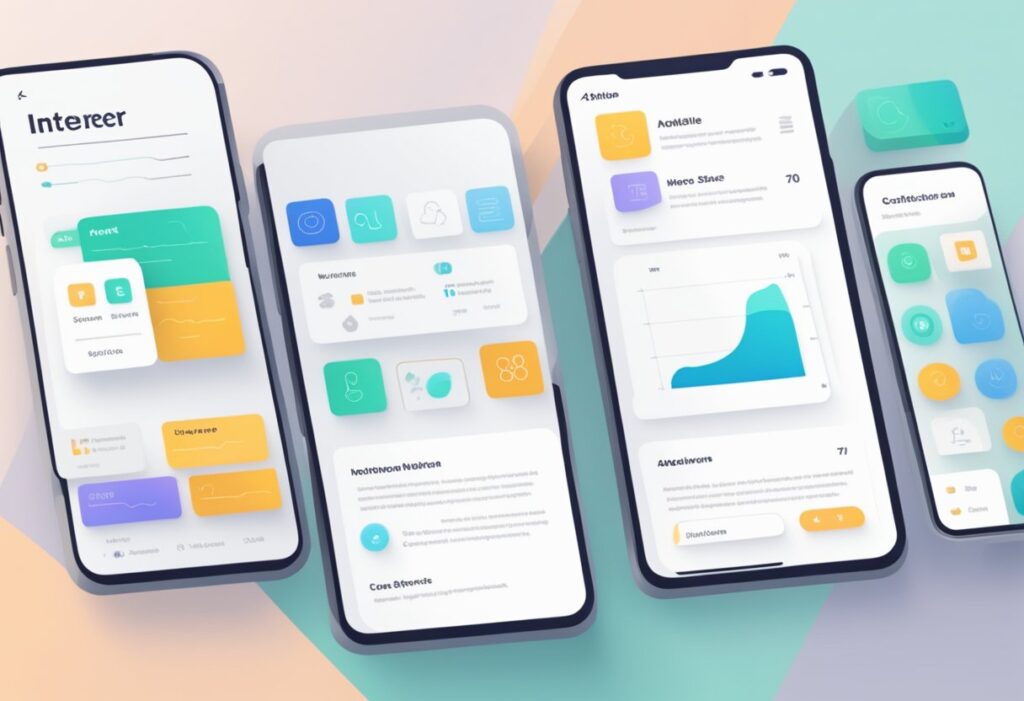React Native Paper is a UI library designed to help developers create clean and simple user interfaces for their mobile applications. Leveraging React Native Paper can help developers save time and effort in designing and implementing UI elements, allowing them to focus on other aspects of their application.

One of the key benefits of using React Native Paper is its pre-built components. These components, such as buttons, text inputs, and checkboxes, are designed with a consistent style and behavior, making it easy for developers to create a cohesive user interface. Additionally, React Native Paper provides customizable themes, allowing developers to easily adjust the look and feel of their application to match their brand or design preferences.
Another advantage of using React Native Paper is its compatibility with both iOS and Android platforms. This makes it an ideal choice for developers who want to create cross-platform applications without sacrificing the quality of their UI. With its intuitive API and extensive documentation, React Native Paper is a valuable tool for any developer looking to create a clean and simple user interface for their mobile application.
Índice De Conteúdo
Getting Started with React Native Paper
React Native Paper is a UI library built on top of React Native that provides pre-designed components for building clean and simple user interfaces. It is easy to use and customize, making it ideal for developers who want to create beautiful and functional apps quickly.
Installation and Setup
To get started with React Native Paper, developers must first install it in their project. This can be done using npm, which is a package manager for Node.js.
Once installed, developers can import the components they need from React Native Paper into their project and start using them. It is important to note that React Native Paper requires React Native version 0.60 or higher to work properly.
Understanding Core Components
React Native Paper provides a wide range of core components that developers can use to build their app's user interface. These components include buttons, cards, text inputs, and more.
Each component comes with its own set of properties that can be used to customize its appearance and behavior. For example, the Button component has properties for setting the button's color, size, and label.
Developers can also create their own custom components using the building blocks provided by React Native Paper. This allows for even more flexibility and customization when building an app's user interface.
Overall, React Native Paper is a powerful tool for building clean and simple UIs in React Native. Its ease of use and customization make it a great choice for developers who want to quickly build beautiful and functional apps.
Advanced Usage of React Native Paper
React Native Paper is a powerful library for building clean and simple UIs in React Native. In addition to its basic usage, there are several advanced techniques that can be used to further customize and optimize your UIs.
Theming and Customization
One of the key features of React Native Paper is its theming system. This allows you to easily customize the look and feel of your app by defining a set of colors, fonts, and other design elements. You can then apply these themes to individual components or to your entire app.
To create a custom theme, you can use the DefaultTheme object provided by React Native Paper as a starting point. This object contains a set of default values that you can override with your own custom values. For example, to change the primary color used throughout your app, you can set the colors.primary property of your custom theme.
In addition to theming, React Native Paper also provides a number of customization options for individual components. For example, you can customize the appearance of buttons, text inputs, and other UI elements by passing in custom styles and props.
Performance Optimization
React Native Paper is designed to be fast and efficient, but there are still several techniques you can use to optimize the performance of your app. One of the most important is to minimize the number of re-renders that occur when your UI changes.
To do this, you can use the React.memo higher-order component to memoize your components and prevent unnecessary re-renders. You can also use the useCallback hook to memoize event handlers and other functions that are passed as props to your components.
Another important technique for optimizing performance is to use the FlatList component instead of the ScrollView component for long lists of data. This is because FlatList is designed to render only the items that are currently visible on the screen, whereas ScrollView renders all items at once.
React Native Paper can be easily integrated with popular navigation libraries like React Navigation. To do this, you can use the createStackNavigator function provided by React Navigation to create a stack navigator that uses React Native Paper components for the header and other UI elements.
For example, to create a stack navigator with a custom header, you can use the header prop to pass in a custom component that uses React Native Paper components for styling:
import { createStackNavigator } from '@react-navigation/stack';
import { Appbar } from 'react-native-paper';
const Stack = createStackNavigator();
function MyStack() {
return (
<Stack.Navigator>
<Stack.Screen
name="Home"
component={HomeScreen}
options={{
header: () => (
<Appbar.Header>
<Appbar.BackAction />
<Appbar.Content title="Home" />
<Appbar.Action icon="menu" onPress={() => {}} />
</Appbar.Header>
),
}}
/>
</Stack.Navigator>
);
}
By leveraging the power of React Native Paper, you can create beautiful and performant UIs for your React Native apps. With its theming system, customization options, and integration with popular navigation libraries, React Native Paper is a versatile and powerful tool for building modern mobile apps.

3 thoughts on “Leveraging React Native Paper for Clean and Simple UIs: A Guide”